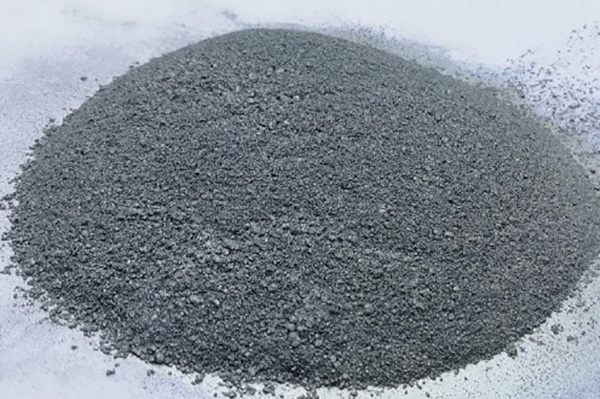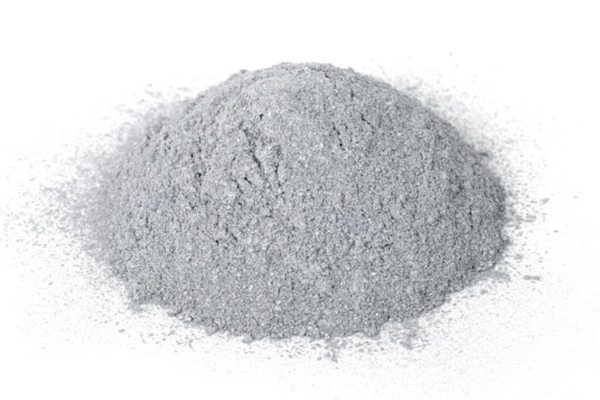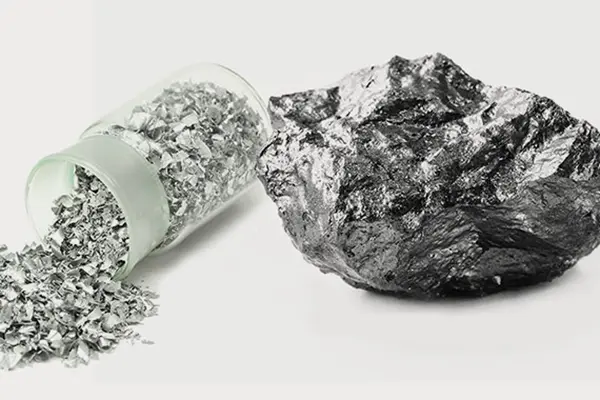Hello everyone, I’m Allen, and I’ve spent many years working in a factory that specializes in building materials. We work a lot with aluminum, especially in creating products like Aluminium pastes for aerated concrete. Often, people get a bit mixed up between aluminum powder and aluminum oxide powder. Do they sound similar? Yes. Are they the same? Not at all! It’s like comparing flour to a baked cookie – related, but very different.
This article is here to help clear things up. We’re going to take a friendly journey to understand the big difference between aluminum oxide powder and aluminum powder. We’ll look at what each one is, their special properties and uses, and why knowing these differences is super important. This is true whether you’re a student, a builder like our friend Mark Thompson, or just curious about the materials that make up our world. Knowing your materials well can save you from headaches and help you choose the best stuff for your projects. So, let’s dive in and learn about these two fascinating powder forms!

1. What is Pure Aluminum Powder Made Of?
Let’s start with the basics. Pure aluminum powder is exactly what it sounds like: it’s made of the metal aluminum, but ground into tiny, tiny pieces. Think of sugar, but instead of sweet crystals, you have tiny bits of shiny metal. This powder is elemental aluminum, meaning it’s just aluminum atoms (Al on the periodic table) and nothing else mixed in chemically. To get this fine powder, manufacturers often pulverize larger pieces of aluminum or use special methods to create small, sometimes even spherical, particles. The particle size can vary a lot, from relatively coarse grains to super-fine aluminum dust, sometimes even down to nano particles which are so small you can’t see them individually (measured in nm, or nanometers!).
Because it’s a metal, aluminum powder keeps many of the properties of a solid piece of aluminum. It’s generally silvery-gray and can have a bit of a metallic sheen, especially when fresh. A key thing about aluminum powder is its large surface area. Imagine one sugar cube versus the same amount of sugar as fine grains – the grains have much more surface exposed. This large surface area makes aluminum powder much more reactive than a solid block of aluminum. We’ll talk more about this reactivity later, but it’s a super important characteristic for many of its uses. For example, this reactivity is why it’s a key ingredient in some types of paints, fireworks, and even rocket propellant!
As a factory, we handle aluminum powder with care. Its fine nature means it can be combustible under the right conditions. It’s this very feature, its ability to react, that we harness in a controlled way to make other useful materials. So, when you hear "aluminum powder," think "pure, tiny pieces of metallic aluminum, ready to get to work!"
2. Understanding Aluminum Oxide: More Than Just a Powder?
Now, let’s switch gears and talk about aluminum oxide. This is where things get a bit different. Unlike aluminum powder, which is pure aluminum, aluminum oxide is a chemical compound. This means it’s made of aluminum atoms and oxygen atoms bonded together. Its chemical formula is Al₂O₃, which tells us that for every two aluminum atoms, there are three oxygen atoms. So, an oxide is a compound that includes oxygen. You might also hear aluminum oxide called alumina. It’s the same thing!

Aluminum oxide isn’t something humans invented; it occurs naturally in the earth. In fact, it’s a very common mineral. One of its most well-known natural forms is corundum. Corundum is an extremely hard substance. Sometimes, corundum contains tiny traces of other elements, like chromium or titanium, which give it beautiful colors. When corundum has chromium, it becomes a ruby! And with titanium (and iron), it can become a sapphire! So, those precious rubies and sapphires are actually forms of aluminum oxide.
When we talk about aluminum oxide powder or alumina powder, we’re usually referring to a synthetically produced white powder. This powder is created through industrial processes and is highly pure Al₂O₃. It doesn’t have the metallic shine of aluminum powder; instead, it’s typically a dull, white powder. The key takeaway here is that aluminum oxide is a very different beast from aluminum powder. One is a pure metal, and the other is a chemical compound of that metal with oxygen, often found as a hard, crystalline material or a fine white powder.
3. How Does Aluminum Turn into Aluminum Oxide?
So, if we have aluminum powder (pure aluminum) and aluminum oxide powder (aluminum plus oxygen), how does one become the other? It’s mostly about a chemical reaction called oxidation. You’ve probably seen oxidation in action with iron: when iron is exposed to air and moisture, it rusts. Rust is iron oxide. Aluminum does something similar, but with a twist!
Aluminum is actually a very reactive metal. It loves to combine with oxygen. When fresh, pure aluminum (like in aluminum powder) is exposed to the air, it quickly starts to react with the oxygen around it. This forms a very thin, but very strong and protective, layer of aluminum oxide (Al₂O₃) on the surface of the aluminum. This layer is so thin you can’t usually see it on a big piece of aluminum, but it’s there! This oxide layer is what protects the aluminum underneath from further reaction or corrosion. It’s one reason why aluminum windows or cans don’t “rust through” like iron can.
While this oxide layer forms naturally and quickly on any exposed aluminum surface, producing large quantities of pure aluminum oxide powder for industrial uses requires more controlled processes. One common method is the Bayer process, which refines bauxite ore (the main source of aluminum) into alumina (aluminum oxide). This alumina can then be used to produce metallic aluminum through electrolysis, or it can be processed into various forms of aluminum oxide powder, ceramics, or other Al₂O₃-based products. So, aluminum naturally wants to become aluminum oxide when oxygen is around. Industries have just figured out how to manage this process to get the specific forms of aluminum or aluminum oxide they need.
4. Can You Tell Aluminum Powder and Aluminum Oxide Apart by Sight and Touch?
Yes, you often can, though it depends on the specific form and particle size of the powders! Let’s imagine you have two bowls, one with aluminum powder and one with aluminum oxide powder.
The aluminum powder, being a metallic powder, will usually have a grayish, sometimes shiny or glittery appearance. If it’s very fine aluminum powder, it might look more like a dull gray dust. If you could (safely!) touch it, it would feel like a typical fine powder. The particle size can range from larger flakes that are visibly metallic to ultra-fine dust that might almost flow like liquid. The key visual cue is that metallic luster, though it can be less obvious in very fine powders or if the surface has already started to form a thin oxide layer.
On the other hand, aluminum oxide powder (or alumina powder) is almost always a white powder. It doesn’t have that metallic shine. Think of something like baking soda or fine salt in appearance – though alumina is much, much harder! It generally looks like a typical non-metallic powder. When you handle aluminum oxide powder, especially common grades used for abrasives, it can feel gritty due to its hardness, whereas some aluminum powder might feel smoother. The particle size of aluminum oxide powder also varies widely depending on its intended use, from coarse grains for sandpaper to superfine powders for polishing or making ceramics.
So, the main visual difference is color and luster: grayish and potentially shiny for aluminum powder versus white and dull for aluminum oxide powder. This is a good first clue when trying to identify the difference between aluminum oxide powder and aluminum powder. Of course, for a definite identification, scientists would use more advanced tests, but for a quick visual check, these clues are pretty helpful.
5. What Makes Aluminum Oxide So Incredibly Hard?
One of the most amazing things about aluminum oxide (Al₂O₃) is its incredible hardness. We mentioned earlier that corundum, a natural form of aluminum oxide, is very hard. How hard? Well, scientists use something called the Mohs scale to measure the hardness of minerals. On this scale, talc (like in talcum powder) is a 1 (very soft), and diamond is a 10 (the hardest known natural material). Corundum (and therefore pure aluminum oxide) scores a 9 on the Mohs scale! This makes it the third hardest natural mineral after diamond and moissanite.
This extreme hardness comes from the very strong chemical bonds between the aluminum and oxygen atoms in its crystalline structure. These atoms are packed together very tightly and in a very organized way in its crystalline form, making it difficult to scratch or break them apart. It takes a lot of force to disrupt these bonds. This inherent hardness is why aluminum oxide is so valued for applications where resistance to abrasion and wear is important.

And remember those beautiful gemstones, ruby and sapphire? They are simply gem-quality corundum! A ruby is corundum that has a little bit of chromium mixed in, which gives it the red color. A sapphire (which can come in many colors, not just blue) gets its color from traces of elements like iron and titanium. The base material, aluminum oxide, provides the amazing hardness and durability, while these tiny impurities give them their stunning colors. So, when you see a sparkling ruby or sapphire, you’re looking at a naturally beautiful and incredibly hard form of aluminum oxide! This high strength and hardness are key properties and uses of this versatile oxide.
6. How Reactive is Aluminum Powder Compared to Aluminum Oxide?
This is a crucial point of difference between aluminum oxide and aluminum powder. They are almost opposites in terms of reactivity!
Aluminum powder, as we touched on, is quite reactive. Because it’s made of tiny particles of pure, elemental aluminum, it has a huge surface area exposed. This means there are lots of aluminum atoms ready to react with other substances. For example, aluminum powder can react vigorously with oxygen, especially if it’s fine powder and there’s a source of ignition. This is why it’s used in fireworks (for bright sparks) and even as a component in some explosive mixtures or as a solid rocket propellant. It’s combustible. When it reacts with oxygen, it forms – you guessed it – aluminum oxide! Aluminum powder can also react with water under certain conditions to produce hydrogen gas. This very reaction is what we, at our factory, use to create lightweight concrete like AAC Block. The aluminum powder reacts to create tiny gas bubbles in the concrete mix, making it light and airy.
On the flip side, aluminum oxide (Al₂O₃) is famous for its inertness. This means it’s very stable and doesn’t like to react with other chemicals. It’s chemically inert. Remember that protective oxide layer that forms on aluminum metal? That layer is aluminum oxide, and its job is to stop further reactions. Because the aluminum atoms in Al₂O₃ are already tightly bonded with oxygen atoms, they are quite happy and don’t have much desire to react further. This stability is why aluminum oxide is great for things like protective coatings, or as a refractory material in high-temperature environments like a furnace, because it won’t easily break down or react. It also makes aluminum oxide suitable for medical implants due to its biocompatibility and lack of reaction with body tissues.
So, in short: aluminum powder is the life of the chemical party, ready to mingle and react. Aluminum oxide is the chill guest who prefers to keep to itself, stable and unreactive. This difference in reactivity is fundamental to their different uses of aluminium in these forms.
7. What are the Primary Uses of Aluminum Powder in Industry?
The reactive nature and metallic properties of aluminum powder make it useful in a surprising number of industrial applications. Its uses often take advantage of its ability to react, its light weight, or its appearance.
Here are some key areas:
- Paints and Pigments: Fine aluminum powder is widely used to create metallic-looking paints and coatings. The tiny flakes of aluminum reflect light, giving a shiny, silvery finish. You see this on cars, appliances, and many other products.
- Pyrotechnics and Explosives: Because aluminum powder is combustible and can burn very brightly and hotly, it’s a common ingredient in fireworks for creating brilliant white sparks and flashes. It’s also used in some types_of explosive compositions and as a rocket propellant because of the energy it releases when it burns.
- Additive Manufacturing (3D Printing): Certain types of aluminum powder are used in 3D printing to create complex metallic parts layer by layer. This is a growing field with exciting possibilities.
- Chemical Reactions & Metallurgy: Aluminum powder can be used as a reactant in various chemical processes. For example, in metallurgy, it can be used in thermite reactions to produce molten iron for welding. It’s also used as a deoxidizer in steelmaking.
- Lightweight Concrete Production: This is an area close to my heart and our business! Aluminum powder plays a vital role in making aerated autoclaved concrete (AAC) and other lightweight concrete products like our ALC Wallboard. When aluminum powder is mixed into a cement slurry, it reacts with alkaline components and water to produce tiny bubbles of hydrogen gas. These bubbles create millions of tiny air pockets in the concrete, making it much lighter than traditional concrete while still being strong. This is a critical use of aluminum powder for energy-efficient building materials. The particle size and quality of the aluminum powder are very important here to control the reaction and get the desired results.
"Getting the right type and particle size of aluminum powder is absolutely essential for producing consistent, high-quality aerated concrete. It’s all about controlled gas generation," I often tell my team.
Post time: 5 月-13-2025




